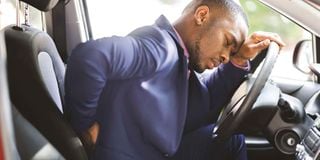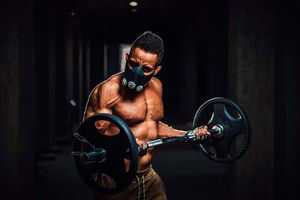5 Orthopaedic injuries men are prone to

Sudden back pain is a sign of Achilles’ tendon rupture.
What you need to know:
- Orthopaedic injuries are common in men, especially those who play sports or have a job that involves repetitive physical motions.
- If you experience signs or symptoms of an orthopaedic injury, see a doctor for diagnosis and treatment.
- Treatment for orthopaedic injuries often involve rest, ice, and physical therapy. Surgery may be necessary in some cases.
Orthopaedic injuries are common and can occur in anyone at any time. However, some are more common in men because they engage in more vigorous physical activities than women.
What is an orthopaedic injury?
Orthopaedic injuries are injuries that affect the bones, joints, or muscles. They can range from mild to severe and can occur in anyone. However, some orthopaedic injuries are more common in certain groups of people than others. These injuries are majorly caused by overuse, trauma, or degenerative conditions.
The most common orthopaedic injuries in men include:
Achilles’ tendon rupture
A tear in the tendon that attaches the calf muscle to the heel bone. It is often caused by overuse and is common in men who play sports such as basketball and football. The Achilles tendon is the largest in the human body. However, it is also the most prone to injury.
Symptoms of Achilles tendon rapture
• sudden pain in the back of the leg or calf
• a popping or snapping sound when one is injured
• difficulty walking or standing
• swelling and bruising in the affected area
In case of any of the symptoms, rest the injured leg, apply ice and use pain relievers.
An Anterior cruciate ligament (ACL) tear
The ACL is a ligament that stabilizes the knee joint. It can be torn if the knee is suddenly twisted or bent in an awkward position. This type of injury is common in men who play contact sports such as football and rugby. However, it can also occur in men who participate in non-contact sports such as skiing and basketball.
Diagnosing ACL tear involves an X-ray, MRI scan, ultrasound, and a physical examination of the knee.
ACL home first aid involves rest, ice, compression, and elevation of the injured area.
Rotator cuff tear
A rotator cuff is a group of four muscles and tendons that stabilise the shoulder joint. A rotator cuff tear can occur due to overuse or injury. This type of injury is common in men who participate in sports that involve overhead motions, such as tennis and baseball. It can also occur in men who have a job that involves repetitive overhead activities, such as painting or carpentry.
Signs of a rotator cuff tear include
- A pop sound when the injury occurs
- Sudden pain in the shoulder
- Weakness in the arm
- Difficulty moving the arm, especially lifting up
Avoid movement that causes pain. Arm sling and over-the-counter pain medications can reduce inflammation and pain. Physical therapy may also be recommended to improve range of motion and strength. In addition, injections of steroids may be given to reduce inflammation.
Hand and arm fracture
A fracture is a break in the bone. For example, a hand or arm fracture can occur due to an injury, such as a fall. This type of injury is common in men who participate in sports. Men who do physical jobs, such as construction work, are also at risk for hand and arm fractures.
Falls cause a considerable percentage of hand and arm fractures, especially for those working with ladders and the elderly.
Meniscus tears
Meniscus tears are common in men who play contact sports, such as football and rugby. However, they can also occur in men who participate in non-contact sports, such as golf, because of twisting motions. Meniscus tears can occur due to degenerative conditions, such as osteoarthritis.
Meniscus tears signs and symptoms include:
• pain in the knee
• swelling in the knee
• a popping or snapping sound when one is injured
• difficulty straightening the leg
If you experience any of these symptoms, see a doctor to diagnose and treat the injury. Treatment for meniscus tears often involves rest, ice, and physical therapy. Surgery may be necessary in some cases.




